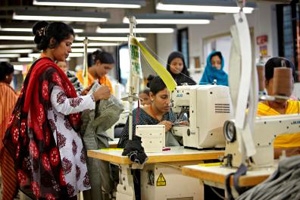McKinsey study underscores need to bridge India’s gender gap
03 Nov 2015
A report by McKinsey Global Institute estimates that bridging the gender gap in India by just 10 per cent could add Rs46 lakh crore (about $0.7 trillion) to the country's gross domestic product (GDP) in 2025.
This economic boost, the report states, translates to 1.4 per cent per year incremental GDP growth.
"About 70 per cent of the increase would come from raising India's female labour force participation rate from 31 per cent at present to 41 percent in 2025. This would bring 68 million more women into the economy over this period," says the report.
Women's contribution to India's GDP is at 17 per cent, much lower than the global average of 37 per cent, and the lowest among all ten regions in the world analysed by Mckinsey Global.
Twenty-six countries in McKinsey dataset of 95 have a lower per capita GDP and Human Development Index than India. However, many of these countries have higher levels of gender parity.
In the India Labour Organization's Global Employment Trends 2013 report, out of 131 countries with available data, India ranked 11th from the bottom in female labour force participation.
"The Indian economy will obviously gain if we bridge the gender gap in the workplace, but this gap cannot be plugged if we don't consider gender equality in society and change our social attitudes and unconscious bias towards women," says Rajat Gupta, director, McKinsey & Co India.
Gender inequality in India is high or extremely high on three dimensions in MGI's framework -gender equality in work, legal protection and political voice, and physical security and autonomy - and medium to high on the fourth dimension of essential services and enablers of economic opportunity.
MGI believes India's policy makers, business leaders, and social-sector leaders need to focus concerted action in these eight areas:
- Closing gender gaps in secondary and tertiary education in India's large states;
- Lowering barriers to job creation;
- Expanding skills training for women in key sectors;
- Expanding the reach of financial and digital services to enable women entrepreneurs;
- Stepping up gender diversity policies and practices in private-sector organisations;
- Further strengthening legal provisions for women and the enforcement of laws;
- Improving infrastructure and services to address the high burden of routine domestic work, childcare and elder care; and
- Reshaping deep-rooted attitudes about the role of women in work and in society.







.webp)














